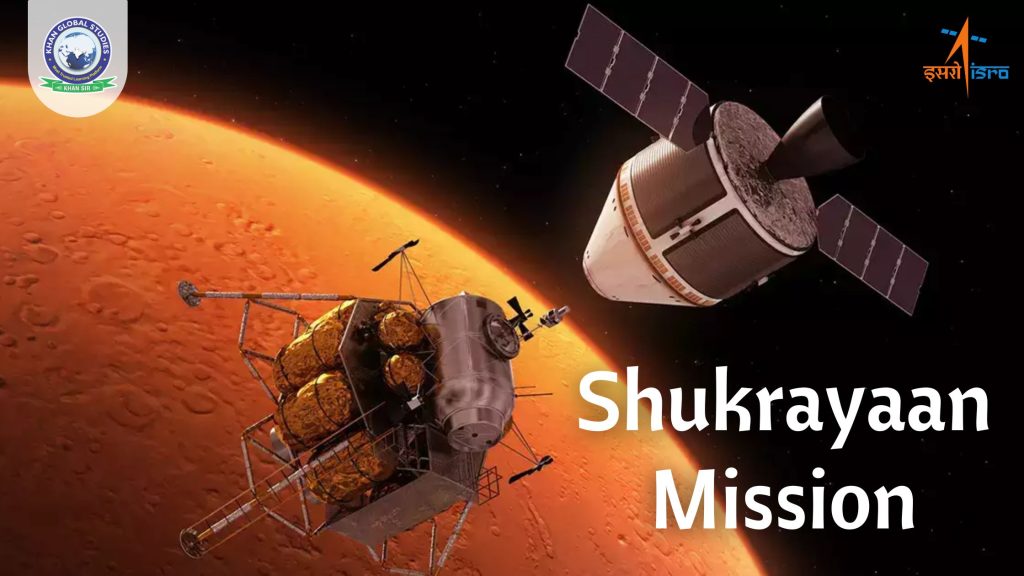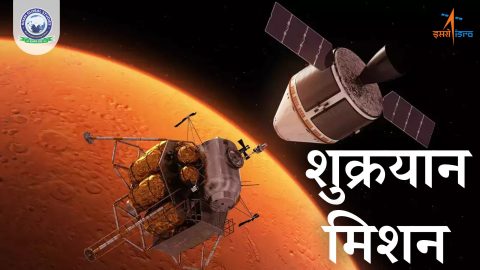Shukrayaan-1, also known as the Venus Orbiter Mission, is the first mission proposed by the Indian Space Research Organisation (ISRO) to the planet Venus. Under this mission, a 2500 kg spacecraft will orbit Venus and explore the mysteries hidden beneath the surface and within the sulfuric acid-laden clouds of this solar system’s hottest planet. The mission will be launched by a GSLV MK II Rocket, carrying scientific instruments such as high-resolution synthetic aperture radar and ground-penetrating radar.
Objectives of Shukrayaan-1
A Comprehensive Study of Venus
The primary objective of Shukrayaan-1 is to conduct a comprehensive study of Venus, also known as “Earth’s twin”. The mission aims to analyze the surface and atmosphere of the planet, which is extremely dense and mysterious. Through this, scientists will be able to better understand weathering, erosion and other geological phenomena.
Analysis of Geological Structure
The geological structure of Venus has been less studied so far. Through this mission, detailed studies will be done on it, which will provide important information about the geological history of the planet. Apart from this, the relationship between solar radiation and surface particles will also be thoroughly investigated.
Importance of Shukrayaan-1
Important Contribution to the Scientific Community
Shukrayaan-1 is very important not only for India but also for the global scientific community. This mission will help scientists understand how Venus, similar to Earth, evolved billions of years ago.
Possibilities of Microbial Life
Recent discoveries have found the presence of phosphine in the clouds of Venus, which could be a possible sign of microbial life. This discovery is raising new hopes and curiosity among scientists about the possibility of life beyond Earth.
Launch Information
- Launch Deadline: ISRO has targeted December 2024 for the launch of the Shukrayaan 1 mission. If the launch is not possible in this time frame, the next possible launch window is set in 2031. At this time, the position of the Earth and Venus will be such that the spacecraft will be able to be put into orbit using minimal propellant.
- Launch Site: The Satish Dhawan Space Center could be the likely site for the launch of the Shukrayaan 1 mission. However, no official announcement has been made by ISRO about it yet.
Spacecraft and Equipment for Launch
Features of Shukrayaan 1
The Shukrayaan 1 mission will consist of an orbiter weighing 2500 kg, carrying a synthetic aperture radar and other science payloads. The mission is currently planned to be launched on a GSLV Mk II rocket. However, ISRO is also evaluating the possibility of using the more powerful GSLV Mk III rocket, which will increase the capacity to carry more equipment and fuel.
Initial Orbit of Venus
The initial elliptical orbit of this mission around Venus will be 500 km at periapsis and 60,000 km at apoapsis.
Challenges of Shukrayaan-1
- Extreme Temperatures: The average temperature of Venus’s surface is over 460°C, which can damage spacecraft instruments. This high temperature is one of the biggest challenges of the mission.
- Atmospheric Pressure: The atmospheric pressure on Venus’s surface is 90 times higher than that of Earth, which can be extremely challenging for any lander or rover.
- Corrosive Sulphuric Acid Rain: Venus’ atmosphere is covered with clouds of sulphuric acid, which can corrode spacecraft components.
- Communication Challenges: Venus’s dense atmosphere and highly reflective clouds can hinder communication with mission control on Earth.
Interesting Facts of Shukrayaan-1
- Venus Mission: Shukrayaan 1 is also known as the Venus Mission. This mission will study Venus’ geological and volcanic activity, wind speed and other planetary features.
- Comparison of Venus with Earth: Venus is often called “Earth’s twin”, but its atmosphere is extremely hot and toxic. This mission will help understand how Earth-like planets evolve and what conditions may exist on Earth-sized exoplanets.
- Help in Modelling: The Shukrayaan-1 mission will also help in modelling Earth’s climate, allowing scientists to predict future climate conditions.
Conclusion
The Shukrayaan-1 mission is an important and challenging step for ISRO. This mission will not only take India’s space programme to new heights but will also provide vital information to the global scientific community.




